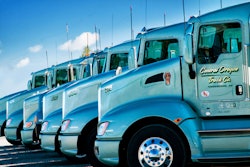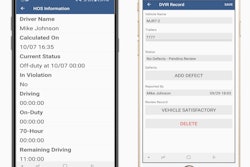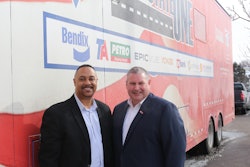CCJ‘s Indicators rounds up the latest reports on trucking business indicators on rates, freight, equipment, the economy and more.
Trucking a bright spot amid otherwise lackluster jobs report: The for-hire trucking industry in February added 900 jobs, according to the Department of Labor’s monthly Employment Situation Summary. Trucking’s gains came despite an overall poor showing for jobs numbers in February, with the U.S. economy adding just 20,000 jobs, according to the DOL. However, the country’s unemployment rate fell to 3.8 percent.
Employment in the for-hire trucking industry totaled 1.5176 million in February, that’s a gain of nearly 40,000 from the same month last year. Trucking has now added more than 61,000 jobs since September 2017, when the industry entered into a streak of month-to-month hiring gains.
The transportation and warehousing sector, the umbrella sector for truck transportation, dropped 3,000 jobs in the month, mostly due to a 9,700-job dip in courier and messenger jobs, according to the DOL. Among major freight-producing sectors, the construction industry lost 31,000 jobs in the month, while the manufacturing sector added 4,000 jobs.
Truck orders remain ‘subdued’: After hitting an 18-month low in January, Class 8 truck orders were again slim in February, according to FTR. Class 8 orders totaled 16,700 in the month — up 5 percent from January but down a whopping 58 percent from February 2018. FTR notes that the January and February numbers are the worst two-month stretch since October and November of 2016.
FTR predicts orders will “stay depressed” throughout 2019, due to a major backlog in build slots for most truck manufacturers due to the record-setting order numbers seen last year. Despite a slowdown in January and February, Class 8 orders from the past 12 months total 429,000 — well above most rolling 12-month periods.
“Fleets that need to order trucks are looking for any available open build slot, regardless of brand. Specifying is also more difficult as the supply chain for parts and components stays tight,” says Don Ake, vice president of commercial vehicles for FTR. “Production continues at high rates, as OEMs build those record orders that were placed in 2018. Trucking capacity is not in the chaotic state it was in 2018, but business remains vibrant. Some moderation in freight growth is expected in the second half of the year and this should loosen things up a bit.”










